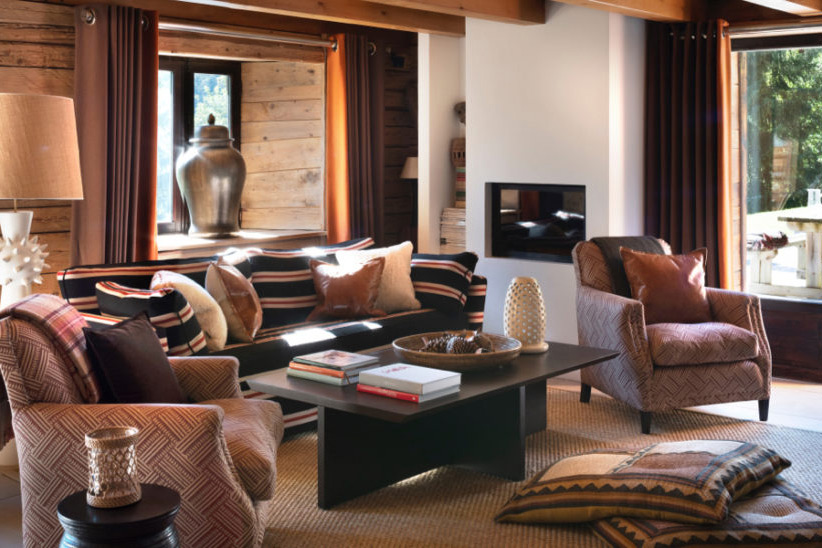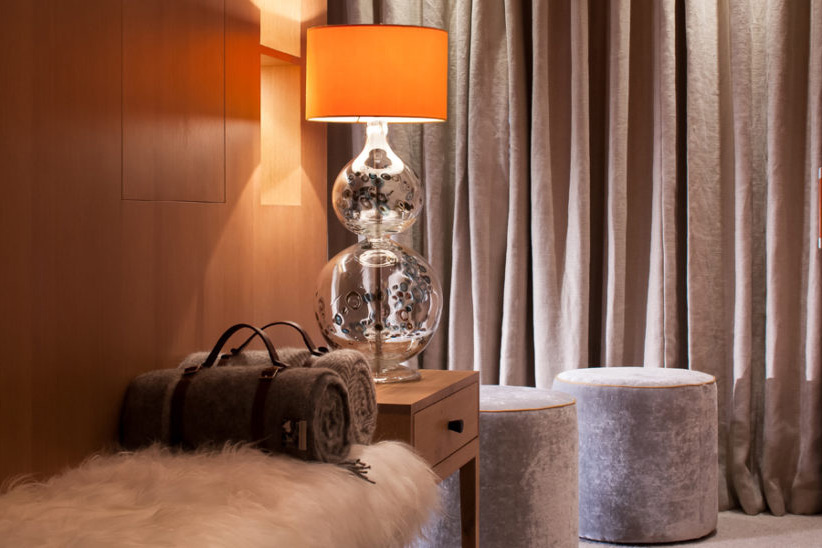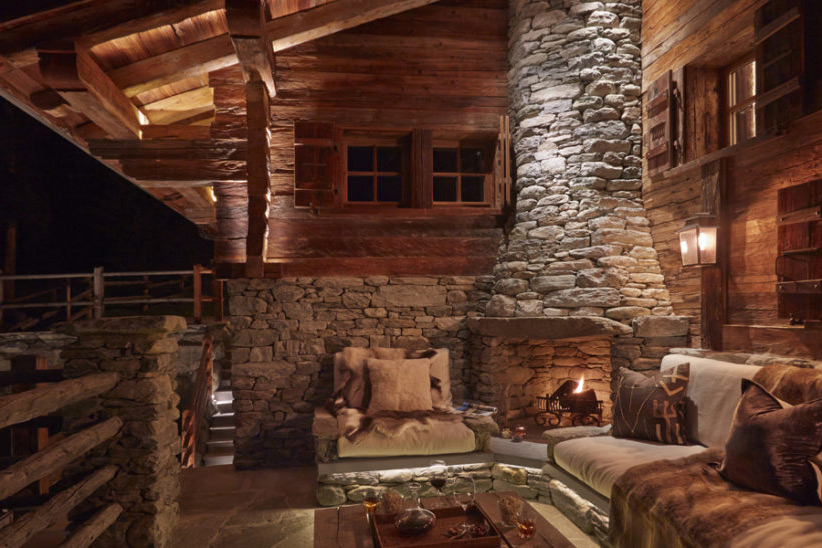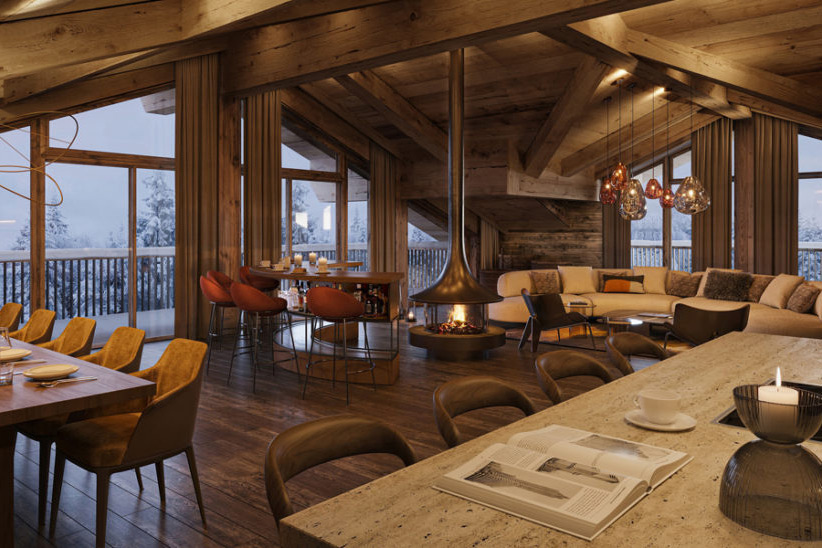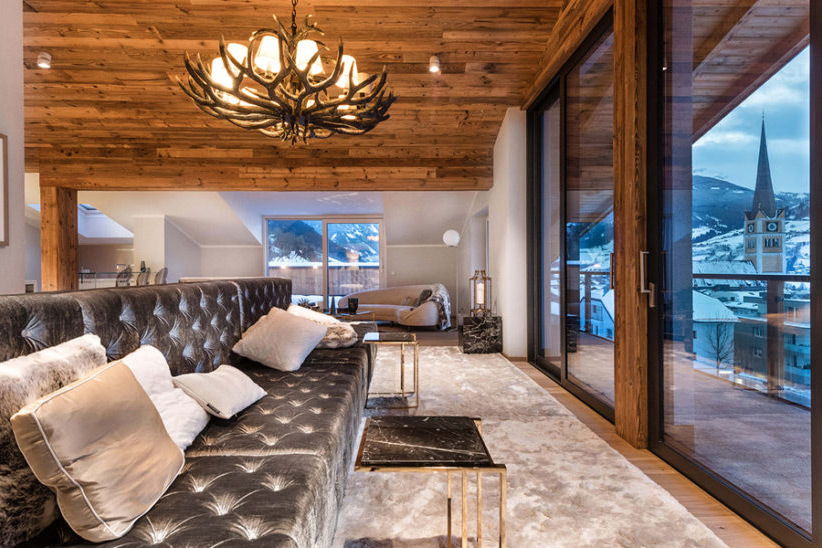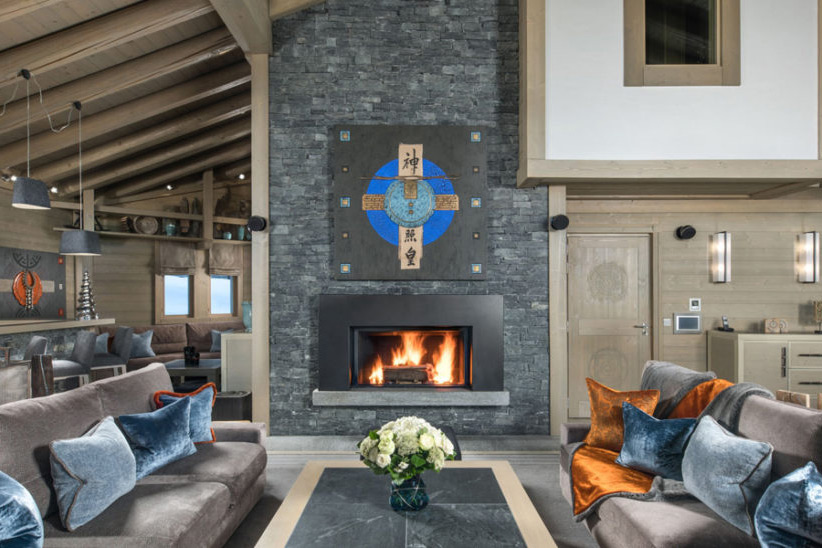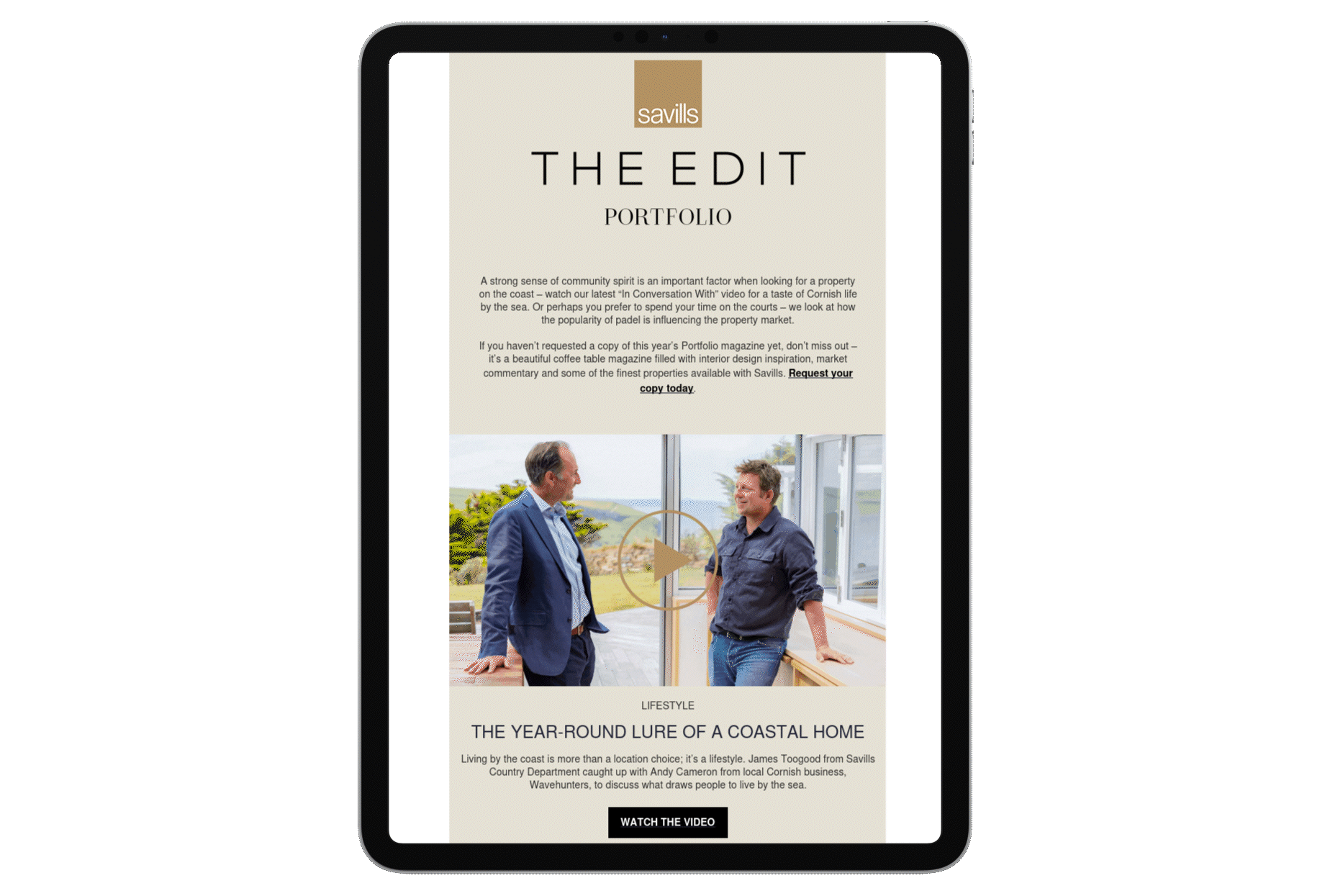Alpine chalets were once purely winter escapes; a place to store your skis after a hard day on the slopes. But a change in lifestyle accentuated by the pandemic, coupled with the realisation that summer in the mountains has much to offer, means Alpine properties are becoming year-round homes.
“Our clients are spending longer periods at their chalets and buyers are increasingly conscious about dual seasonality,” says Jeremy Rollason, Head of Savills Ski. “Some clients are renting out their chalet on seasonal or even annual tenancies, to those who wish to experience the Alpine lifestyle year round.”
This change to year-round use has inspired new thoughts about interior design – ideas to transform these chalets into luxurious modern homes that are as comfortable in summer as they are in winter.
“Once rustic shelters, chalets are now trophy homes and their style has changed dramatically,” says Nicky Dobree, one of the world’s leading luxury chalet designers.
Dobree set the standard for contemporary Alpine luxury 20 years ago when she renovated her chalet, Ferme de Moudon, in Les Gets. While she retained the exterior of the traditional Savoyard farmhouse, inside she opened up the space and created two vast picture windows to let the light flood in. Juxtaposing contemporary materials and details with more traditional ones, she introduced lacquer, coloured glass and wenge, the modern materials sitting against a backdrop of traditional timbers, along with contemporary French and Italian designer furniture.
Adding character
Whether modern or traditional, a design works best when the materials convey a sense of place. Timber, often larch or oak, is a constant, reflecting the surrounding landscape. “As well as reminding you of where you are, it’s cosy, textural and good for sound-proofing,” says Kate Earle of interior designers Todhunter Earle, whose international portfolio includes an award-winning chalet. “We prefer oak to pine as it is less orange in colour. Also, reclaimed wood is absolutely wonderful as it gives that lovely feeling of age.”
Stone, too, is a much-used local material. In areas such as Tarentaise in France, says Dobree, it is used more than timber. “How timber and stone are used to complement the space is key to how the interior will feel,” she continues. “Too much and it can feel oppressive; too little and it can feel bland.”
Fabrics are important for adding warmth to both timber and stone. Andrew Laughland of Laughland Jones, whose clients include entrepreneur Richard Branson, for whom they designed a chalet in the Swiss resort of Verbier, uses linen bought directly from Belgian mills; while Todhunter Earle like to work with used cashmere on bedroom walls to create “a lovely cosiness”.
When it comes to furniture, a mix of old and new helps give a chalet, especially a new build one, a sense of permanence. “We will always do something like team a modern sofa with an antique dining table,” says Earle.
Layout for living
“A chalet is a place where you can enjoy time with family and friends in a relaxed environment and the layout needs to reflect that,” says Dobree, whose living rooms feature expansive sofas and comfortable armchairs. “Open-plan spaces with a living, dining and kitchen area are far more convivial and lend themselves to relaxation and entertaining.”
A spacious dining space is also key. “People may spend four to six hours sitting down to a meal so while you want it to be stylish, it also needs to have comfortable seating,” says Laughland. “And as well as an area for adults to relax before and after dinner, we often include an area, such as a mezzanine, where children can spend time gaming.”
A roaring log fire is another must-have. “There is nothing nicer on a winter’s night than to light a fire, watch the flames dance, listen to the crackle and pop of the logs, feel the warmth that emanates and enjoy the smell of the fire,” says Dobree. “It is instantly welcoming and brings a chalet alive.”
Not surprisingly, access to the slopes is a priority when considering the overall layout. “For ski-in/ski-out, the exit corridor needs to be seamless – first, a room for putting on boots, the next for coats and lastly skis,” says Laughland.
For chalets away from the pistes, Earle suggests a heated drive. “It allows you to drive straight into the garage and unload your skis,” she says. “A more formal entrance is for guests coming to dinner.”
Ski equipment in winter – and in summer, mountain bikes and kayaks – means storage is indispensable. Never underestimate how much you need. “We are often asked for bike racks,” says Laughland. “And outside showers for dogs.”
Ski resorts are famous for their après-ski – now this entertainment is increasingly centred around the chalet. “Since the pandemic we are being asked more and more for outdoor entertaining spaces that include fire pits, sofas with outdoor upholstery and outdoor rugs,” says Earle.
Dobree recently added a pool, sunken hot-tub and terrace with fire pit to Ferme de Moudon. “We now include more toys than ever before – pools, gyms and spas but also cinemas, wine rooms and games rooms; even bowling alleys and smoking rooms are not unusual.”
The latest technology is now an expected part of the design, especially when it comes to lighting, which includes statement chandeliers and more intimate mood lighting. “Rather than having a bank of switches, intelligent lighting can be operated remotely and with various brightness and mood settings,” says Laughland.
Time it right
When it comes to the process of working with a designer, the advice given by designers is similar to that of an urban project. “Have an idea of when and how you are going to use it, how you want it to look and give your designer a really clear brief,” says Earle. “And be involved – everybody knows what they like and what they don’t like.”
However, a mountain location can have a significant impact on a renovation, particularly in some resorts that don’t permit work during the ski season.
“The window for a chalet build is tight, so it’s important that everything is locked down before the first hole is dug,” says Dobree. “The building must be watertight by December. Work then starts on the interior and, depending on the scale of the project, will be complete for the following winter season.” Ready for the start of a fabulous Alpine life.
Rachel Loos is a former editor of ELLE Decoration and writes about architecture and design. Having spent 10 years living in south-west France where she renovated an Art Deco manor house, she now lives in Dorset.


